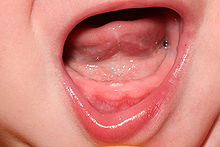Signs and symptoms of teething
- Soreness and swelling of the gums
- Symptoms appear 3-5 days before the tooth emerges
- Drooling or dribbling
- Increased chewing
- Mood changes and irritability
Sequence of tooth appearance
- Teeth emerge in pairs
- Lower central incisors appear at around 6 months
- Upper central incisors appear at around 8 months
- Upper lateral incisors appear at around 10 months
- Lower lateral incisors appear at around 10 months
Misdiagnosis as teething
- Teething does not cause fever or diarrhea
- Belief that teething causes fever is common
- Some studies show a mild temperature elevation during teething
- Fever during teething may actually be due to illness or infection
- Herpes virus infection can mimic teething symptoms
Treatment options for teething
- Chewing on objects can aid in teething
- Teething rings and toys designed with textures can provide relief
- Some infants find relief from chewing on cold objects
- Avoid teething necklaces or bracelets as they can be dangerous
- Freezing small chunks of fruits or vegetables in teething nets may help
Medication for teething pain relief
- Non-steroidal anti-inflammatory drugs (NSAIDs) can be used for pain relief
- Child-safe pain-relief treatments containing benzocaine, lidocaine, or choline salicylate may be recommended
- Benzocaine should be used cautiously due to the risk of methemoglobinemia
- Choline salicylate is related to aspirin and may cause Reyes syndrome
- Lidocaine gel can provide numbing effect for a short duration
Teething is the process by which an infant's first teeth (the deciduous teeth, often called "baby teeth" or "milk teeth") appear by emerging through the gums, typically arriving in pairs. The mandibular central incisors are the first primary teeth to erupt, usually between 6 and 10 months of age and usually causes discomfort and pain to the infant. It can take several years for all 20 teeth to complete the tooth eruption. Though the process of teething is sometimes referred to as "cutting teeth", when teeth emerge through the gums they do not cut through the flesh. Instead, hormones are released within the body that cause some cells in the gums to die and separate, allowing the teeth to come through.


Teething may cause a slightly elevated temperature, but not rising into the fever range of greater than 38.0 °C (100 °F). Higher temperatures during teething are due to some form of infection, such as a herpes virus, initial infection of which is extremely widespread among children of teething age.